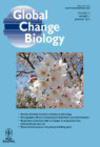 /
Research
/
Articles
/
2011
/
21st century climate change threatens mountain flora unequally acro...
/
Research
/
Articles
/
2011
/
21st century climate change threatens mountain flora unequally acro...

Engler, R., C. F. Randin, W. Thuiller, S. Dullinger, N. E. Zimmermann, M. B. Araújo, P. B. Pearman, G. Le Lay, C. Piedallu, C. H. Albert, P. Choler, G. Coldea, X. De Lamo, T. Dirnbock, J.-C. Gégout, D. Gómez-García, J.-A. Grytnes, E. Heegaard, F. HoIstad, D. Nogués-Bravo, S. Normand, M. Puscas, M.-T. Sebastià, A. Stanisci, J.-P. Theurillat, M. R. Trivedi, P. Vittoz, and A. Guisan
Continental-scale assessments of 21st century global impacts of climate change on biodiversity have forecasted range
contractions for many species. These coarse resolution studies are, however, of limited relevance for projecting risks to
biodiversity in mountain systems, where pronounced microclimatic variation could allow species to persist locally, and
are ill-suited for assessment of species-specific threat in particular regions. Here, we assess the impacts of climate change
on 2632 plant species across all major European mountain ranges, using high-resolution (ca. 100 m) species samples and
data expressing four future climate scenarios. Projected habitat loss is greater for species distributed at higher elevations;
depending on the climate scenario, we find 36–55% of alpine species, 31–51% of subalpine species and 19–46% of
montane species lose more than 80% of their suitable habitat by 2070–2100. While our high-resolution analyses
consistently indicate marked levels of threat to cold-adapted mountain florae across Europe, they also reveal unequal
distribution of this threat across the various mountain ranges. Impacts on florae from regions projected to undergo
increased warming accompanied by decreased precipitation, such as the Pyrenees and the Eastern Austrian Alps, will
likely be greater than on florae in regions where the increase in temperature is less pronounced and rainfall increases
concomitantly, such as in the Norwegian Scandes and the Scottish Highlands. This suggests that change in precipitation,
not only warming, plays an important role in determining the potential impacts of climate change on vegetation.
Engler, R., C. F. Randin, W. Thuiller, S. Dullinger, N. E. Zimmermann, M. B. Araújo, P. B. Pearman, G. Le Lay, C. Piedallu, C. H. Albert, P. Choler, G. Coldea, X. De Lamo, T. Dirnbock, J.-C. Gégout, D. Gómez-García, J.-A. Grytnes, E. Heegaard, F. HoIstad, D. Nogués-Bravo, S. Normand, M. Puscas, M.-T. Sebastià, A. Stanisci, J.-P. Theurillat, M. R. Trivedi, P. Vittoz, and A. Guisan (2011). 21st century climate change threatens mountain flora unequally across Europe. Global Change Biology 17: 2330–2341